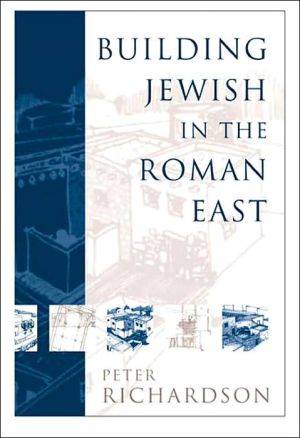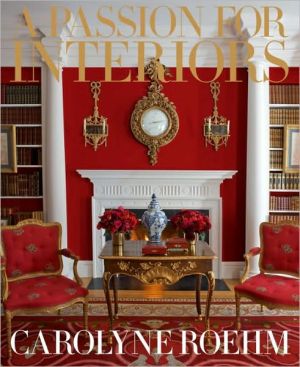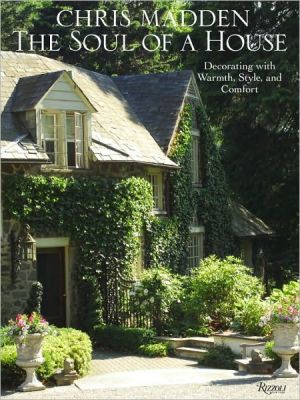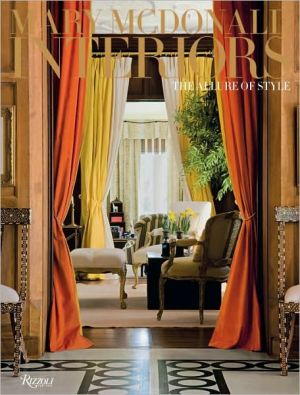Building Jewish in the Roman East
Archaeology has unearthed the glories of ancient Jewish buildings throughout the Mediterranean. But what has remained shrouded is what these buildings meant. Building Jewish first surveys the architecture of small rural villages in the Galilee in the early Roman period before examining the development of synagogues as "Jewish associations." Finally, Building Jewish explores Jerusalem's flurry of building activity under Herod the Great in the first century BCE. Richardson's careful work not...
Search in google:
Archaeology has unearthed the glories of ancient Jewish buildings throughout the Mediterranean. But what has remained shrouded is what these buildings meant. Building Jewish first surveys the architecture of small rural villages in the Galilee in the early Roman period before examining the development of synagogues as “Jewish associations.” Finally, Building Jewish explores Jerusalem’s flurry of building activity under Herod the Great in the first century BCE. Richardson’s careful work not only documents the culture that forms the background to any study of Second Temple Judaism and early Christianity, but he also succeeds in demonstrating how architecture itself, like a text, conveys meaning and thus directly illuminates daily life and religious thought and practice in the ancient world.
Building Jewish in the Roman East \ \ By Peter Richardson \ Baylor University Press \ Copyright © 2004 Baylor University Press\ All right reserved.\ ISBN: 978-1-932792-01-0 \ \ \ \ \ Chapter One \ RELIGION AND ARCHITECTURE IN THE EASTERN MEDITERRANEAN \ While the connections between religion and architecture are often noted, much of the interest in the two together has been either in the aesthetics or in the history of the development of religious buildings. Interest in buildings within specific religious contexts, particularly buildings within a Jewish context, is less common. This book juxtaposes the study of religion and of architecture to examine the ways architecture impinges on the practice of religion and religion on the practice of architecture. Since I deal with material two millennia before the present, such a study must be either theoretical, something I have little interest in pursuing, or deeply rooted in archaeological excavations of the ancient world.\ The modern discipline of archaeology informs this book directly, though I do not write as an archaeologist, but as a scholar of religion. To my longstanding interest in texts I add an even longer-standing interest in architecture, having practiced architecture before turning to religious studies. So this book is concerned with the intersection between religion and architecture and the intersection between archaeology and texts. I weave into this my interests in late Hellenism, Roman Imperialism, Second Temple Judaism, and early Christianity.\ Late Hellenism, Roman Imperialism, Second Temple Judaism, and Early Christianity\ It is almost impossible to exaggerate the complexity of the late Hellenistic world in the eastern end of the Mediterranean in the first centuries B.C.E. and C.E., the period on which this book focuses. On the one hand, Greek culture, religion, and institutions, as those were refracted by the conquests of Alexander the Great and his successors, had deeply influenced the cultural norms of the region, especially among the elites. At the same time as these influences continued to be felt, Rome continued its almost inexorable progress eastwards to assume political control of all the lands bordering the Mediterranean, encouraging the adoption of that curious blend of Roman and Greek religion and culture, especially the form developed from 27 B.C.E. onwards that we think of as Roman Imperialism. Both late Hellenism and Roman Imperialism encouraged a more unified view of the Mediterranean world than had generally characterized other cultures and periods, with more trade, travel, and international contacts. One result of the increased opportunities for contacts across previous boundaries was the establishment of numerous "Diaspora" communities of more or less ethnically coherent groups of dislocated peoples-dislocated mainly by choice-in large metropolises. No Diaspora group was more visible than the groups of Jews who by circumstance or choice had settled in various places around the Mediterranean.\ Homelands were of abiding significance for Diasporas. Most Jews continued to feel a strong attachment to Judea, Judaism's center and the place where its major institutions dominated the landscape until the time of the First Jewish Revolt (66-74 C.E.), which resulted in the destruction of the Second Temple in 70 C.E. The vibrancy of Judaism continued to be felt even after the consequences of this revolt and a Second Revolt (132-135 C.E.), together with a series of Diaspora Revolts (115-117 C.E.) in such places as Mesopotamia, Cyprus, Egypt, and Cyrenaica. The homelands of other ethnic groups were also affected by similar feelings of nationalistic fervor, which resulted in other revolts against Rome at about the same time as the Jewish Revolts: Germans, Illyrians, Pannonians, Thracians, Batavians, and Britons. Commitment to indigenous religions continued to be strong, even though indigenous religions lived alongside imported Greek and Roman religious influences and commitments. Palmyrene, Nabatean, Samaritan, and Egyptian religions, like Jewish religion, continued vigorously at the very same time as Greek and Roman religions were being encouraged and voluntarily adopted. To make matters more complex, within this matrix and during this period, new religions or new articulations of old religions developed that began to attract considerable attention. The worship of Jesus the Messiah (Christ) from Galilee, Mithra from Persia, Isis from Egypt, and Cybele from Phrygia, became prominent and gained numerous adherents, altering the ways in which both indigenous and imported religions were viewed and supported.\ One of the legacies of the late Hellenistic period in the Levant, as elsewhere in the eastern Mediterranean, was a widespread distribution of impressive and architecturally sophisticated structures that expressed clearly the dynamic architectural, urban, and spatial program of the period. This legacy continued even after Roman influence began to be felt, and it is impossible to draw a sharp line between the two, since, of course, Rome drew extensively on Greek and Hellenistic influences in its own architectural developments. To appreciate the general point, it is sufficient to refer to cities such as Gerasa, Palmyra, Baalbek, Antioch, Damascus, and Petra in the Levant, or to cities such as Rhodes, Lindos, Ephesus, Miletus, Priene, and Pergamon in the Greek East. There is an almost seamless architectural transition from late Hellenism to Roman Imperialism; in some cases, late Hellenistic styles of building continue into the early Roman period. Individual monuments still startle: the Khasneh in Petra, Zeus in Gerasa, Bel in Palmyra, Athena in Lindos, Apollo in Didyma, and the Asklepieion at Pergamon are representative of a much longer list.\ Late Hellenistic works led the way in a program of urban development and renewal that continued in the early Roman period in many of the same cities, resulting in structures bent more deliberately to promote a Roman program of urban sophistication and excitement. Roman ideals and standards for the articulation of space show up in the widespread adoption of a colonnaded main street (cardo maximus) in Petra, Gerasa, Apamea, Palmyra, Damascus, and Antioch-where the development began-and such a feature illustrates well the merging of eastern and Roman aesthetics and functions. But Roman approaches showed even more directly in the widespread distribution of baths, nymphaea (public fountains), hippodromes, amphitheaters, and theaters. It showed especially in structures for the Imperial cult, a distinctive form of the Roman Imperial period. Not all of these building types were uniformly widespread; for example, the Near East was more restrained in promoting the Imperial cult than the Greek East in Ionia. There were important temples to Roma and Augustus in Caesarea Maritima, Sebaste, and Panias (all built by the Romanophile, Herod the Great), but none of any substance in the cities of the Decapolis, Petra, Palmyra (where there was a modest Caesareum), or Damascus. The liveliness of indigenous religion seems to have acted as a brake on the spread and distribution of the worship of the emperor, so Herod's promotion of the Imperial cult makes his building program distinctive in the eastern Mediterranean, more like the province of Asia than the surrounding provinces.\ Mention of Herod introduces Part 4. Herod was a Jew who, though observant, practiced his Judaism in a relatively liberal way. Spanning late Hellenism and early Roman Imperialism, Herod was a major architectural patron whose benefactions and building projects decisively altered the region, not just Judea but the surrounding areas, as well as parts of Asia, the Aegean Islands, and Greece. His role was seminal. In his projects we find an intricate blending of late Hellenistic aesthetic ideals with Roman building programs and Roman technology. Nowhere else in the Mediterranean world outside Rome was there such a powerful and important patron with such a longstanding and influential interest in building. He was among the most significant architectural patrons of his immediate period and perhaps the most exciting architectural patron of the ancient world. To mention a few examples: he built the first colonnaded main street in Antioch-on- Orontes; he built three Temples to Roma and Augustus in his own territories, he donated theaters, gymnasia, baths, and marketplaces to nearby cities; he was responsible for public buildings in the new city of Nicopolis; he created whole new cities, such as Caesarea Maritima; and he thoroughly reconstituted the center of Judaism in Jerusalem.\ Herod's projects were mainly buildings for Jewish elites. Alongside elite buildings there were other forms of Jewish building, however. This book concentrates on two of these, buildings of ordinary Jewish villages and buildings for Jewish worship. Knowledge of villages and small towns in the Galilee has been increasing exponentially because archaeological projects have focused on the ordinary life of rural and agrarian peasants. This move beyond a "great monuments" approach to antiquity has exposed the structures, activities, and life of ordinary Jews. The two major test cases in Part 2 of this book are Yodefat (Jotapata) (Plate 3), a small fortified town that was destroyed in 67 C.E. because of its resistance to Roman reconquest of Judea, and Cana (Khirbet Qana) (Plate 4), a small unfortified village about two kilometers away, that became an important stop on the itinerary of Christian pilgrims in the Byzantine period because of its association with Jesus. Alongside these, towns such as Gamla (Plate 1) and Capernaum figure in the discussion, because they situate first-century Jews (and Jesus) within their natural Jewish context.\ Interest in Jewish synagogues-both in the homeland and the Diaspora-has also increased exponentially. Strong contrasting positions have developed, with little consensus on major scholarly issues. My interest in Part 3 is primarily in the origins of synagogue buildings; my position is one among several competitors, though I should like to think it is an opinion that has been gathering strength. I am convinced that synagogue buildings developed first in the Diaspora, probably in Egypt; the model for its development was the association (collegium, thiasos, koinon). A secondary interest has been the connection between the architectural development of buildings for Jewish and for Christian communities, which has drawn me into a discussion of early churches and early monasteries in a preliminary way. My continuing interest in Christian origins thus finds expression tangentially in this book. Christianity initially developed within a Jewish matrix, so its setting in Jewish villages was a fundamental aspect of its practices and institutions. When churches began to be built, they adopted and adapted Jewish models-and more broadly other models from the surrounding Roman world-seen most clearly in the use of "house churches" in the earliest phase, parallel to the early adoption of "house synagogues" among a number of Diaspora communities of Jews. Even the development of the basilican-style church and the creation of monastic communities had earlier Jewish parallels or analogies. So the fruits of Jewish building practices continued to be garnered among Christian communities from the second century onward.\ In the following three parts of this book, the self-conscious expression of Judaism in material forms-through synagogues, the activity of Herod the Great, and the natural expression of Jewish social organization and religious activities in small towns and villages-represents the primary data. I include a wide range of Jewish building activities, for religion informs all these diverse activities. When looking at the material products of Judaism, various realia need to be included: stoneware, pottery, ossuaries, and tombs from daily life; the various forms that expressed Judaism's communal life in Diaspora synagogues; villages, towns, and new suburbs in major cities; and the massive rebuilding projects of important patrons such as Herod the Great.\ Texts and Artifacts\ The study of antiquity relies fundamentally on two kinds of evidence, texts and archaeological investigations. Each supplements the other; neither suffices alone. Reconstruction of the past is most secure when the evidence from both coheres; historical reconstructions are most debatable when one or other kind of evidence is absent or ignored. A simple illustration makes the point. One of the most suggestive bits of literary information about Herod the Great is the comment, put in Augustus's mouth at a dinner party, that he would rather be Herod's pig than his son. This is from a fourth-century report that is so late that on ordinary grounds it would have little claim to reliability. It makes a point about Herod-that he observed Jewish prohibitions against pork-that might hardly be thought current in Rome. The report is widely doubted and could be wrong, but it raises an important question: Was Herod religiously observant? Material evidence from Herod's buildings has accumulated to the point where two elements of his observance can be noted with some degree of certainty. On the one hand, none of his private buildings in Judea had decorations that offended against torah. On the other hand, these same buildings had mikvaoth, Jewish ritual bathing pools. It is possible to argue convincingly now that Herod was religiously observant, at least in Judea and to a considerable extent in the Diaspora. It is not improbable that Augustus knew of Herod's kosher food observance, for his buildings testify both to cultic and torah observance.\ An exciting aspect of keeping both texts and material evidence in the forefront is that it leads to fresh kinds of questions and new approaches to resolving old questions. Several chapters in the following exemplify some of these varied approaches. In Part 2, the cross-fertilization between an analysis of the Q source and the results of investigations into Jewish village life permit approaching a text from relevant excavations. In Part 3, the literary use that Eusebius makes of Philo sheds light on the connections between Jewish and Christian building practices, especially the building of monastic buildings, working from a literary text to an architectural problem. In Part 4, the use of archaeological information bears upon the literary problem of Josephus's sources, particularly his use of Nicolas of Damascus (an important person within Herod's entourage). Though methodology is not prominent in the following pages, substantial methodological questions are at issue.\ Many works of ancient authors demonstrate that they shared similar concerns. On the Roman side, Strabo (ca. 58 B.C.E.-25 C.E.), whose interests ran more to the ethnographic and anthropological than to the architectural, helps in reconstructing the character of ancient cultures. His Geography often mentions cities and occasionally individual buildings in ways that resonate with the archaeological evidence that has emerged. Pliny the Elder (23-79 C.E.) was mainly interested in natural history, and he is a mine of information about such material developments as glassmaking, building materials, decorative elements for sculpture, mosaics, and the like (Natural History). On directly architectural topics, none is as important as Vitruvius (late first century B.C.E.), whose On Architecture was penned under Augustus's patronage; he describes issues such as climate, site development, and urban design; materials and methods of construction; differentiations among building types; details of acoustics, hydraulics, machines, and even military equipment. And one can hardly ignore Pausanias (fl. about 150 C.E.), whose Description of Greece includes detailed descriptions of numerous ancient cities that permit surer identification of buildings and monuments than might otherwise be possible. There are, of course, numerous others who have important asides on material culture, but these suffice to make the point that literary texts and material culture fit together.\ In antiquity a distinction between literary texts-for these were all literary works, sometimes of considerable rhetorical force-and material culture was hardly sharp. In developing their accounts of Greek and Roman culture these authors utilized the material world around them as an essential element. On the Jewish side, there is less. Josephus, the most famous Jewish historian of antiquity, had strong interests in his built environment. Some of this interest was no doubt taken over from Nicolas, whose works have survived only in small fragments. But some of it was his own, as in his descriptions in War of his construction of village defenses. Regrettably, the Memoirs of Herod, which Josephus says he used, have been totally lost; it is unclear how much Josephus drew on them. They would have told us much of what we might wish to know in interpreting the archaeological remains of Herod's buildings, and who his architect was, if he had one. Philo was inclined to philosophy and theology, so his major contribution for our purposes was his description of the Therapeutae and their monastic life. The Mishnah is sometimes interested in material things, such as its accounts of baths, sculpture, and images, and no study of first-century Judaism can ignore it. In connection with the Jerusalem temple, we have to fall back on descriptions in Ezekiel, 11QT, Philo, Josephus, and the Mishnah.\ (Continues...)\ \ \ \ \ Excerpted from Building Jewish in the Roman East by Peter Richardson Copyright © 2004 by Baylor University Press. Excerpted by permission.\ All rights reserved. No part of this excerpt may be reproduced or reprinted without permission in writing from the publisher.\ Excerpts are provided by Dial-A-Book Inc. solely for the personal use of visitors to this web site. \ \
Ch. 1Religion and architecture in the Eastern Mediterranean3Ch. 2Jesus and Palestinian social protest in archaeological and literary perspective17Ch. 33-D visualizations of a first-century Galilean town39Ch. 4Khirbet Qana (and other villages) as a context for Jesus55Ch. 5First-century houses and Q's setting73Ch. 6What has Cana to do with Capernaum?91Ch. 7Pre-70 synagogues as Collegia in Rome, the diaspora, and Judea111Ch. 8Architectural transitions from synagogues and house churches to purpose-built churches135Ch. 9Philo and Eusebius on monasteries and monasticism : the Therapeutae and Kellia151Ch. 10Jewish voluntary associations in Egypt and the roles of women165Ch. 11Building a "Synodos ... and a place of their own"187Ch. 12An architectural case for synagogues as associations207Ch. 13Law and piety in Herod's architecture225Ch. 14Why turn the tables? : Jesus' protest in the temple precincts241Ch. 15Josephus, Nicolas of Damascus, and Herod's building program253Ch. 16Origins, innovations, and significance of Herod's temple271Ch. 17Herod's temple architecture and Jerusalem's tombs299Ch. 18The James Ossuary's decoration and social setting309Ch. 19Building Jewish in the Roman East327








